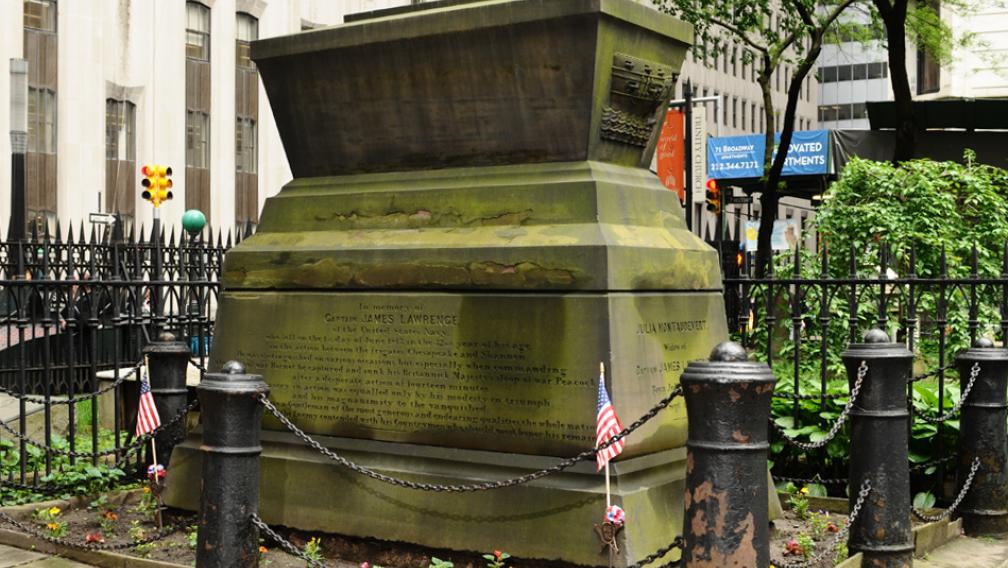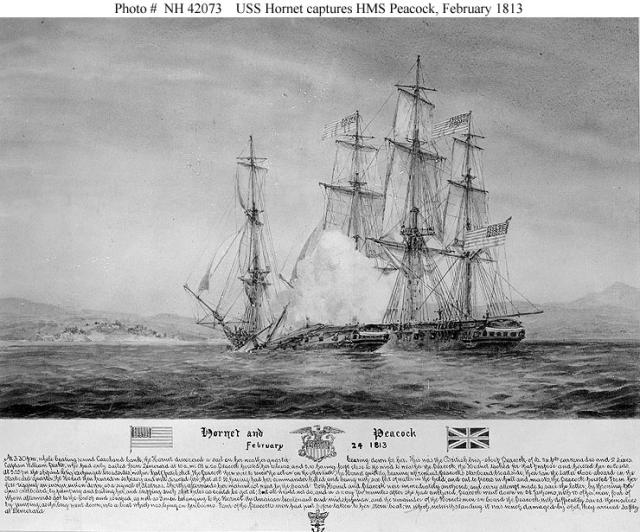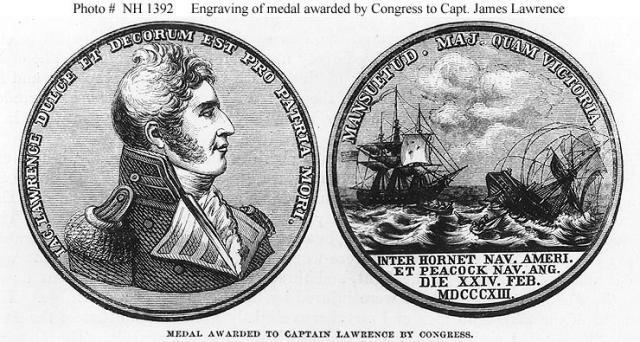This Monday, the nation pauses to remember the women and men who died in service of the country’s armed forces. While many veterans are interred in parish cemeteries, fewer are buried here who died while serving. General Richard Montgomery is a notable exception, as is the subject of today’s blog, Captain James Lawrence.
Lawrence was born in Burlington, New Jersey in 1781 and raised in Woodbury. He was commissioned as a lieutenant in the U.S. Navy in 1802 and saw action in Tripoli during the First Barbary War.

By 1812, when the U.S. declared war on Great Britain in response to British interference with U.S. maritime trade operations, Lawrence had been promoted to master commandant and given charge of the U.S. Sloop of War Hornet. In February 1813, after a month spent blockading a British sloop in Bahaia, Brazil, the Hornet encountered the H.M.S. Peacock off the coast of Guyana and sunk her. Lawrence was hailed as a hero, and Congress issued a medal in his honor.

Lawrence was quickly promoted to captain and put in charge of the frigate U.S.S. Chesapeake, stationed in Boston Harbor. British ships were blockading the Harbor. In late May the frigate H.M.S. Shannon sailed into Massachusetts Bay and on June 1, 1813, its captain, Philip Broke, challenged Lawrence to the maritime equivalent of a duel. The frigates would meet at the Boston Light and fight it out, unassisted by other ships. Lawrence agreed, and the ships met in the late afternoon in full view of Bostonians who congregated on rooftops to watch the showdown. Click here for a Boston Globe article about controversy surrounding the battle.
The battle began at 6pm and, despite its gentlemanly beginnings, quickly turned bloody. 228 men were killed in the fourteen-minute battle. Lawrence was hit twice, and after the second wound issued his famous command: “Don’t give up the ship! Fight her til she sinks!” He was taken below deck for surgery as the victorious British boarded the Chesapeake, at which point he issued a less-famous (and not acted upon) command to blow the ship up.
Lawrence died three days later of his wounds, leaving behind his pregnant wife, Julia Montaudevert, and a two year old daughter. He was briefly survived by his aide, Lieutenant Augustus Ludlow, who succumbed to his injuries five days later.
Commodore Oliver Hazard Perry, a friend of Lawrence, adopted Lawrence’s famous command as his personal battle cry. He had a large war flag featuring the phrase created and displayed it during sea and lake battles throughout the remainder of the war.
Lawrence and Ludlow were first interred in Halifax, Nova Scotia, before their remains were moved to Salem, Massachusetts and later to Trinity churchyard. The church erected the current monument, located in the south churchyard, in 1846. The four-sided monument honors Lawrence, Ludlow, and Lawrence's wife, Julia, who died in 1865. Intact parts of an earlier monument were given to the New York Historical Society.
Check back soon for part two of the story of the Lawrence monument.


